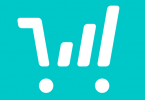If you sell digital products, you might be wondering where to switch platforms or start out on.
And if you’re not selling digital products, we’ve got one question for you: why not?
| TL:DR: ThriveCart is the best choice you can make when selling your digital products. |
More and more digital entrepreneurs are selling their own digital products nowadays, despite the meteoric rise of dropshipping and affiliate marketing. Doing so comes with a ton of advantages, which we’ll dive into in a minute.
However, choosing the right platform to sell your digital products can be a bit of a daunting task. So, in this article, we will explore some of the best platforms available in 2023. Not only will we delve into the advantages and disadvantages of some of the most well-known and popular platforms, helping you to make an informed choice, but there’s also a handy comparison table at the end so you can see your options at a glance.
Let’s dive in!
Digital Products: They’re The Best
Before we start weighing up the pros and cons of each platform, let’s take a look at why selling digital products is an awesome choice to make money online.
1. Low Overhead Costs
One of the best aspects of selling digital products is the minimal overhead. Unlike physical products, there’s no need for manufacturing, storage, or shipping. Once your digital product is created, it can be duplicated infinitely at virtually no additional cost.
2. Scalability
Digital products are highly scalable. You can sell to a global audience without worrying about running out of stock or increasing production costs. This scalability allows for substantial revenue growth without the hassle of managing inventory.
3. Passive Income
Many digital products can generate passive income. Once created and set up, they can continue to sell without constant attention. This makes digital product businesses an excellent choice for those seeking to diversify their income streams or build an online empire.
4. Creative Freedom
Selling digital products gives you an awful lot of options. Whether you’re an artist, singer, writer, coder, or educator, digital products allow you to share your talents and knowledge with a vast audience: put simply, nothing’s off limits.
Now, the eagle-eyed among you will have noticed the main advantages to digital products are a lack of inventory and shipping costs. These are great points, but the dropshipping business model offers those advantages, too. So, why choose digital over physical products?
Digital vs. Physical Products
Before we dive into specific platforms, it’s important to understand the key differences between selling digital and physical products. Each has its unique challenges and advantages.
Instant Delivery
Unlike physical products, consumers don’t have to wait days or weeks for their purchase to arrive. They can start using what they’ve bought straight away – which is not only great for them, it also means there’s little to no “cooling-off period” between the buyer’s high and the pleasure of using the item.
No Shipping Costs
Digital shipping is not a thing, and this removes a big barrier for consumers. No one likes paying S&H, and it can be a hassle for you to set up models such as “free plus shipping” or building shipping into the price (difficult to get right when shipping internationally). No shipping means no fuss.
No Breakages
Digital items always arrive safe and sound, no broken or missing parts. It’s always a risk when you buy physical products that your package goes missing or arrives damaged: however, that’s not the case with digital.
Eco-Friendly
Selling digital products is more environmentally friendly since it doesn’t involve the production and transportation of physical goods, which can have a significant carbon footprint.
Easy to Update
Digital products can be easily updated or revised to address customer feedback, changing market trends or new technology and advanced techniques, without shipping all new products.
Less Legal Stuff
Dealing with physical products often involves compliance with various regulations, including shipping, safety, and import/export laws. Selling digital products typically involves fewer legal complexities and regulatory requirements.
Phew! Have we convinced you that you need to be selling digital products yet? Meanwhile, let’s explore some of the best platforms for selling digital products in 2023.
Gumroad
Gumroad has gained popularity among digital creators for its simplicity and flexibility. It offers a range of features designed specifically for selling digital products, making it an excellent choice for beginners and established creators alike.
Advantages of Gumroad
- Ease of Use: Gumroad is known for its user-friendly interface, making it easy for creators to set up their online stores and start selling quickly.
- Customization: While it provides easy-to-use templates, Gumroad also allows for significant customization, letting you personalize your storefront to match your brand.
- Payment Flexibility: Gumroad supports various payment methods, including credit cards, PayPal, and Apple Pay, making it convenient for customers.
- Digital Product Protection: It offers tools for digital product protection, including PDF stamping and limited download attempts, helping prevent unauthorized distribution.
- Analytics: Gumroad provides valuable analytics and reporting tools, enabling you to track sales, customer engagement, and more.
Disadvantages of Gumroad
- Transaction Fees: Gumroad charges a per-transaction fee in addition to payment processing fees. While this fee structure is relatively transparent, it can eat into profits for high-volume sellers.
- Limited E-commerce Features: Gumroad primarily focuses on digital products, so it may not be the best choice if you plan to expand into physical products or need advanced e-commerce features.
- Customer Support: Some users have reported mixed experiences with Gumroad’s customer support, with occasional delays in resolving issues.
Best for: small, impulse buy digital products such as templates, with not a lot of customization options.
Shopify
Shopify is a versatile e-commerce platform that’s often associated with physical products, but it can also be a good choice for selling digital products.
Advantages of Shopify
- Robust E-commerce Features: Shopify is renowned for its wide range of e-commerce features, including inventory management, order processing, and marketing tools.
- App Ecosystem: The Shopify App Store offers numerous apps and plugins that can enhance your digital product store’s functionality.
- Scalability: Shopify is built to handle businesses of all sizes, making it suitable for both small creators and large enterprises.
- Professional Themes: Shopify offers a variety of professionally designed themes that can give your digital product store a polished and attractive appearance.
- Payment Gateways: Shopify supports a vast array of payment gateways, allowing you to offer convenient payment options to customers worldwide.
Disadvantages of Shopify
- Cost: Shopify’s pricing can be on the higher side for beginners, especially when you factor in subscription fees, transaction fees, and payment processing fees.
- Learning Curve: While Shopify is user-friendly, it may still have a steeper learning curve compared to some other platforms, especially for beginners.
- Maintenance: You’ll need to manage hosting, updates, and security, which can be overwhelming for some users.
Best for: experienced business owners looking to expand their business, who are prepared to hire developers.
ThriveCart
That’s us! We’re a platform designed from the ground-up for digital product creators and marketers. We focus on maximizing conversions and revenue with easy-access features and lots of customization options.
Advantages of ThriveCart
- Conversion Optimization: ThriveCart offers features like one-click upsells, A/B testing, and cart abandonment recovery, all designed to increase your conversion rates.
- No Transaction Fees: ThriveCart does not charge transaction fees, which can significantly impact your profitability, especially for high-volume sellers.
- Affiliate Management: It includes built-in affiliate management tools, allowing you to recruit affiliates to promote your products.
- Subscription Management: ThriveCart is equipped to handle subscription products, making it suitable for those offering ongoing digital services or content.
- Integrations: It integrates with a variety of popular tools and platforms, including email marketing services and payment gateways.
Disadvantages of ThriveCart
- Limited Storefront Customization: While our platform is easy to use, it doesn’t really offer the whole storefront experience offered by some other platforms.
- Focused on Digital Products: We designed ThriveCart from the get-go with digital products in mind: we may not be the best choice if you plan to expand into physical goods.
Best for: anyone who’s starting out, or wants to maximize conversions on a high-ticket product.
Etsy
Etsy is a well-known platform for selling handmade and vintage goods, but with a bit of ingenuity you can also use it to sell digital products. However, it’s mainly targeted at artists and crafty folk.
Advantages of Etsy
- Established Marketplace: Etsy has a huge and active user base, providing exposure to potential customers who appreciate unique, handcrafted, or artistic digital products.
- Community: Etsy fosters a sense of community among its sellers, offering support and guidance with lots of forums and resources.
- Ease of Use: Setting up a store on Etsy is fairly straightforward, and also accessible to beginners.
- Payment Processing: Etsy handles payment processing for you, which simplifies the transaction process.
Disadvantages of Etsy
- Fees: Etsy charges listing fees, transaction fees, and payment processing fees, which can add up and basically reduce your profitability.
- Limited Branding: While you can customize your Etsy shop to some extent, it’s still within the confines of the Etsy marketplace, limiting your branding opportunities.
- Competition: The popularity of Etsy means there’s often fierce competition among sellers, making it challenging to stand out.
- Product Restrictions: Etsy has specific guidelines for digital products, and not all types of digital goods may be permitted. You’ll need to do your own research.
Best for: printables, worksheets and aesthetic digital items.
WooCommerce
WooCommerce is a plugin for WordPress that transforms your WordPress website into a full-fledged e-commerce store. It’s highly customizable and offers numerous extensions to enhance functionality.
Advantages of WooCommerce
- Customization: WooCommerce provides extensive customization options, allowing you to create a unique digital product store.
- Scalability: Since it’s built on WordPress, you have complete control over your website’s growth and scalability.
- No Transaction Fees: WooCommerce doesn’t charge transaction fees, so you keep more of your earnings.
- SEO Friendly: WordPress is renowned for its SEO capabilities, giving you a competitive edge in search engine rankings.
- Community and Support: There’s a large and active community of WooCommerce users and developers, so you’ll get ample support and resources.
Disadvantages of WooCommerce
- Learning Curve: Setting up and managing WooCommerce can be challenging for beginners, especially if you’re not already familiar with WordPress.
- Hosting and Maintenance: You’ll need to handle hosting, updates, security, and backups, which can be time-consuming and complex (not to mention expensive).
- Additional Costs: While WooCommerce itself is free, you may need to purchase premium themes and extensions to get all the functionality you need.
Best for: anyone who wants to set up a store via WordPress.
Creative Market
Creative Market is a marketplace specifically designed for designers, artists, and creators to sell digital assets such as fonts, graphics, templates, and more.
Advantages of Creative Market
- Targeted Audience: Creative Market caters to a niche audience of creative professionals, ensuring your digital products reach the right people.
- Visibility: Your products are showcased in a marketplace where potential customers are actively seeking these kinds of digital assets, increasing your visibility.
- E-commerce Features: Creative Market handles payment processing and provides tools for managing your digital product listings. Woohoo!
- Community: The platform fosters a community of designers and creators, offering opportunities for collaboration and networking.
Disadvantages of Creative Market
- Competition: Since Creative Market is focused on a very specific niche, there’s often intense competition among sellers in the same category as you and you may struggle to stand out in the marketplace.
- Fees: The platform charges a commission on every sale: consequently, this can quickly erode your profitability.
- Limited Product Types: While it’s great for design assets, Creative Market is not suitable for other types of digital products.
Best for: sellers of graphics, fonts, templates, and other digital assets.
Platform vs Platform
Now that was a lot of info. Now, in case you skipped ahead to this section, here’s a comparison table summarizing the key features and drawbacks of each platform:
| Advantages | Disadvantages | |
| Gumroad | – User-friendly interface | – Transaction fees |
| – Customization options | – Limited e-commerce features | |
| – Payment flexibility | – Mixed customer support | |
| Shopify | – Robust e-commerce features | – Costly subscription fees |
| – App ecosystem | – Learning curve | |
| – Maintenance responsibilities | ||
| ThriveCart | – Conversion optimization | – Limited storefront customization |
| – No transaction fees | – Focused on digital products | |
| – Affiliate management | – Learning curve | |
| – Subscription management | ||
| Etsy | – Established marketplace | – Fees |
| – Community support | – Limited branding opportunities | |
| – Ease of use | – Competition | |
| – Payment processing | – Product restrictions | |
| WooCommerce | – Customization options | – Learning curve |
| – Scalability | – Hosting and maintenance | |
| – No transaction fees | – Additional costs | |
| – SEO friendly | ||
| Creative Market | – Targeted audience | – Intense competition |
| – Visibility | – Fees | |
| – Limited product types |
ThriveCart: Your Best Platform for Digital Products
Did you expect a different outcome? Okay, we’re biased, but hear us out: we started ThriveCart with a dream of selling digital products easily online. And… we’re crushing it.
At time of writing, ThriveCart has processed payments totalling over $2.6 billion, with over 16.4 million products sold. That’s a lot of happy customers.
Unlike Etsy, this is what we were made for. Unlike Creative Market, you can sell any digital product you want. And unlike Shopify, we’re easy to set up no matter if you’re a beginner or a seasoned pro: no plugins needed.
With built-in affiliate management, easy-to-use templates and support for subscription products, we’re a powerful and cost-effective solution. However, we’re not perfect for everybody. But it’s more than likely we’re right for you.
So, why not get started with ThriveCart today? We can’t wait to see what you sell!




